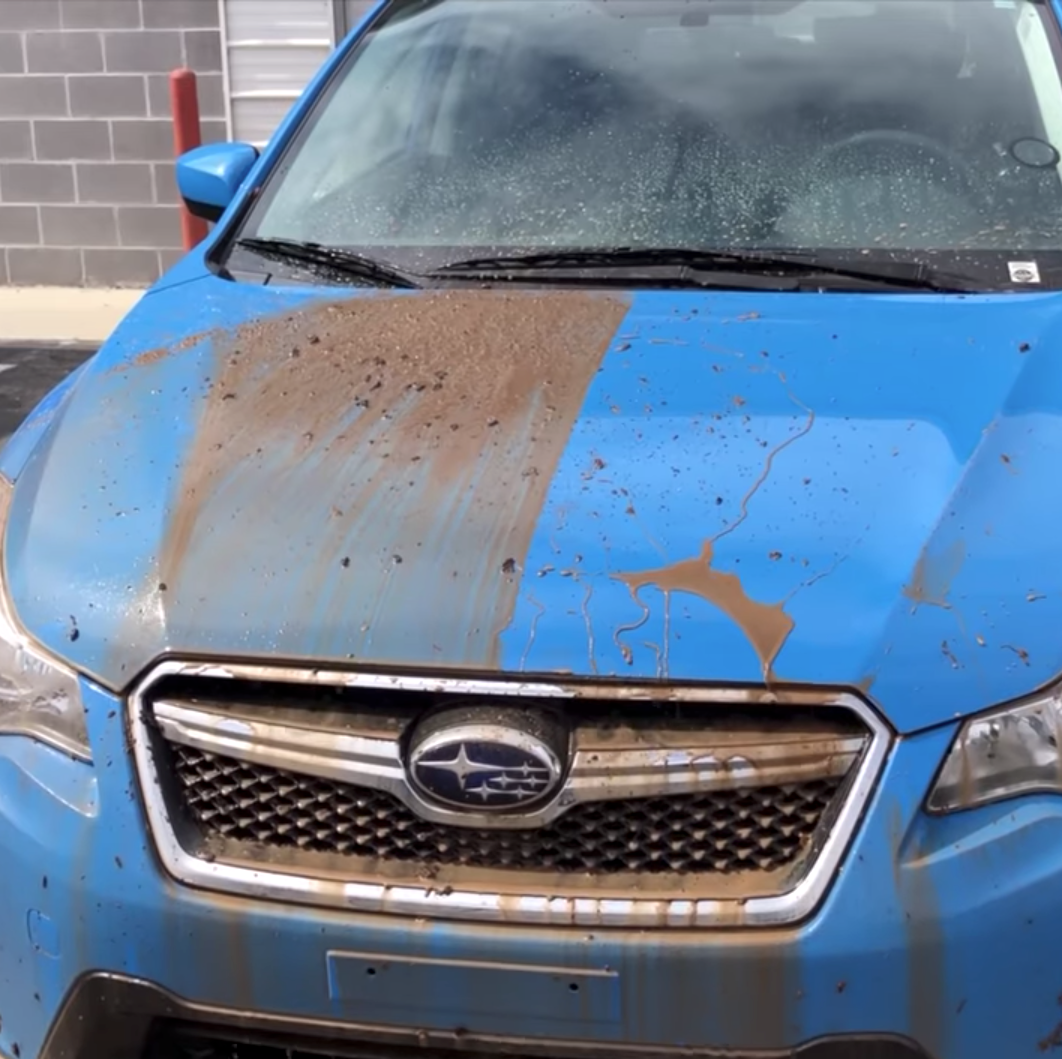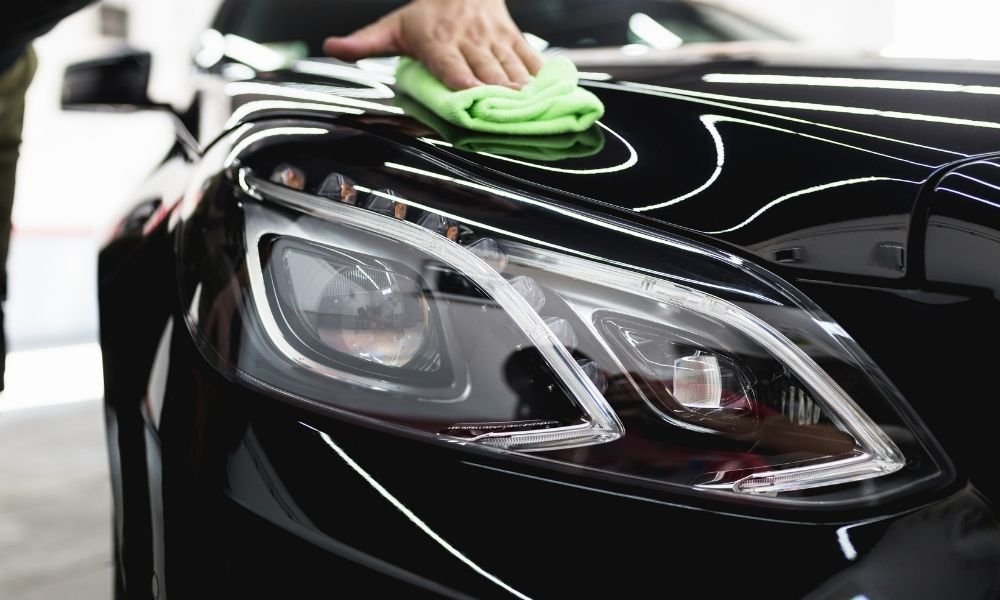10 Myths About Final Touch Auto Works Ceramic Coatings—Debunked!
10 Myths About Final Touch Auto Works Ceramic Coatings—Debunked!
Blog Article
The Ultimate Guide to Ceramic Coatings: Enhancing Your Cars and truck's End up and Durability
If you're seeking to boost your vehicle's appearance and protection, ceramic layers may be the option you have actually been looking for. These sophisticated finishings bond with your automobile's paint, producing a long lasting barrier versus ecological damages. Just how do they stack up versus traditional wax? Recognizing the benefits and application procedure can make a considerable difference in your automobile care regimen. Let's discover what makes ceramic layers a rewarding financial investment for your automobile.
What Are Ceramic Coatings?
Ceramic finishings are sophisticated protective layers that improve your car's exterior. They're made from a liquid polymer that chemically bonds with your lorry's paint, developing a long lasting guard. Unlike typical wax or sealants, which wear away in time, ceramic finishings offer long-lasting defense versus environmental contaminants like UV rays, dust, and chemicals.When you apply a ceramic finishing, you're buying an obstacle that repels water, making it simpler to clean your vehicle and maintaining it looking newer for longer. This modern technology assists maintain the integrity of your paint, minimizing the risk of scratches and oxidation.Ceramic finishings come in different formulas, each made to deal with various demands and preferences. You can select a do it yourself kit or opt for professional application, relying on your convenience level and budget. Generally, ceramic layers represent an advanced service for keeping your automobile's aesthetic charm and durability.
Benefits of Ceramic Coatings
When you buy a ceramic finish, you reveal a series of advantages that exceed simple visual appeals. To begin with, it offers extraordinary security against environmental pollutants like dirt, bird droppings, and UV rays, maintaining your automobile's paint looking brand-new much longer. You'll see that upkeep comes to be less complicated, as the hydrophobic homes trigger water and gunk to slide off effortlessly. This implies less time spent cleaning and detailing your vehicle.Additionally, ceramic finishings can boost the gloss of your car's coating, offering it that display room luster. They additionally offer resistance to scratches and swirl marks, which aids maintain your lorry's resale value. With a ceramic finish, you're not simply protecting your investment; you're also enhancing its total appearance and longevity. Inevitably, this advanced modern technology assurances your auto sticks out while appreciating long-lasting benefits that typical waxes merely can not match.
The Application Process: Exactly How to Apply Ceramic Coatings
Using a ceramic finishing involves several vital steps to assure excellent outcomes. Extensively wash your cars and truck to eliminate any dust, grime, or pollutants. This assures the surface area is prepared and clean for the coating. Next off, decontaminate the paint using a clay bar to eliminate ingrained particles. Afterward, evaluate the paint for flaws and polish it to attain a smooth surface.Once your automobile's surface area is prepped, use the ceramic covering in little areas. Make use of an applicator pad to spread the finish evenly, adhering to the producer's directions. Permit the finishing to treat for the advised time, generally between one to 2 hours, relying on the product.Finally, stay clear of cleaning your vehicle for a minimum of a week to allow the finishing bond appropriately. Complying with these steps will certainly aid you attain a durable, high-gloss coating that secures your auto for several years ahead.

Comparing Ceramic Coatings to Traditional Wax
After guaranteeing your automobile's surface is perfectly prepped with a ceramic finishing, it's time to ponder exactly how this modern remedy compares to traditional wax. Ceramic finishes provide a durable layer of defense that lasts for several years, while wax usually supplies only a few weeks of sparkle. You'll notice that ceramic coverings bond with your paint, creating a hydrophobic surface that repels water and dirt, making upkeep easier.In comparison, traditional wax sits on top of the paint and needs frequent reapplication. With ceramic layers, you obtain remarkable scrape resistance and UV defense, assisting to avoid fading and oxidation. While the initial investment for a ceramic finish is greater, the long-term benefits usually exceed the prices. If you're looking for longevity and improved gloss, ceramic coatings are a clever choice over standard wax.
Upkeep Tips for Your Ceramic Layered Car
To keep your ceramic-coated lorry looking immaculate, normal upkeep is crucial. Start with a gentle clean using a pH-balanced shampoo; stay clear of harsh detergents that can weaken the covering. Make use of a microfiber laundry glove to avoid scratches and constantly wash thoroughly to get rid of any kind of soap residue.After cleaning, dry your automobile with a soft microfiber towel to avoid water spots. Consider using a ceramic upkeep spray every couple of months to boost the coating's hydrophobic homes and include an additional layer of protection.It's likewise wise to stay clear of automatic cars and truck cleans with abrasive brushes, as they can damage the layer. Rather, select hand washes or touchless wash options. In addition, routinely inspect your vehicle for pollutants like tree sap or bird droppings and resolve them immediately to avoid etching. Complying with these tips will certainly help keep the shine and toughness of your ceramic-coated automobile for several years to find.
Common Misconceptions Concerning Ceramic Coatings
Regardless of the outstanding advantages of ceramic finishes, several misconceptions can produce confusion for car proprietors. One common misunderstanding is that ceramic coverings remove the requirement for upkeep. While they do my link offer improved protection, routine cleaning and treatment are still vital to keep that high-gloss finish.Another misconception is that these finishes are scratch-proof. While they provide a strong layer of defense versus minor scrapes, they can't hold up against severe influences or abrasive materials.Many also think that ceramic layers will certainly make their vehicles unsusceptible to all impurities. In truth, they fend off dust and water but will not avoid issues like bird droppings or tree sap from creating damages if left unattended.Lastly, some assume that using ceramic finishings is a do it yourself task any individual can deal with, yet achieving a remarkable application often requires professional competence to ensure peak results.
Picking the Right Ceramic Layer for Your Auto
Just how do you select the ideal ceramic finishing for your vehicle? Start by taking into consideration the level of protection you require. If your automobile faces rough weather condition or regular trip, choose a high-end covering that provides remarkable sturdiness and resistance to scrapes, UV rays, and chemical stains.Next, consider the application approach. Some coatings need professional setup, while others are DIY-friendly. If you're experienced, a DIY product might save you money, however, for the most effective outcomes, a professional can ensure appropriate application.Don' t neglect to inspect the longevity of the finish. Some last a couple of years, while others can shield for a decade or more. Read reviews and testimonies to determine individual contentment. By evaluating these elements, you'll find a ceramic coating that not just boosts your auto's appearance but additionally provides long-lasting security.
Often Asked Inquiries
For How Long Do Ceramic Coatings Last typically?
Ceramic layers typically last anywhere from 2 to five years, depending on factors like application, maintenance, and environmental problems. You'll intend to follow correct treatment routines to optimize their durability and effectiveness.
Can Porcelain Coatings Be Applied Over Paint Scratches?
You can not use ceramic coatings over paint scratches efficiently. It's finest to fix any scratches first, making sure a smooth surface - Final Touch Auto Works Ceramic Coatings. In this manner, the layer bonds appropriately and supplies suitable security for your car's finish
Are Ceramic Coatings Safe for All Car Surface areas?
Ceramic coatings are usually secure for the majority of vehicle surfaces, including paint, glass, and wheels. Nevertheless, it is important to examine particular item standards, as some coverings could not appropriate for particular materials or finishes.

Will Ceramic Coatings Protect Against UV Damages?

Can I Do Touch-Ups on Ceramic Covered Surface Areas?
You can do touch-ups on ceramic layered surface areas, but it's important to make use of suitable products. Confirm the location is tidy and follow appropriate application techniques to keep the layer's honesty and performance. Unlike traditional wax or sealants, which put on off over time, ceramic layers provide resilient security against environmental contaminants like UV rays, dust, and chemicals.When you apply a ceramic finish, you're investing in an obstacle that fends off water, making it easier to clean your car and keeping it looking more recent for longer (Final Touch Auto Works Ceramic Coatings). Later, inspect the paint for blemishes and polish it to achieve a smooth surface.Once your cars and truck's surface is prepped, use the ceramic coating in little sections. Enable the coating to heal for the suggested time, generally between one to 2 hours, depending on the product.Finally, avoid cleaning your vehicle for the original source at the very least a week why not try these out to let the layer bond appropriately. Consider applying a ceramic maintenance spray every couple of months to enhance the finish's hydrophobic properties and include an extra layer of protection.It's likewise wise to stay clear of automatic car cleans with rough brushes, as they can damage the coating. Ceramic coverings are normally risk-free for the majority of cars and truck surface areas, including paint, glass, and wheels
Report this page